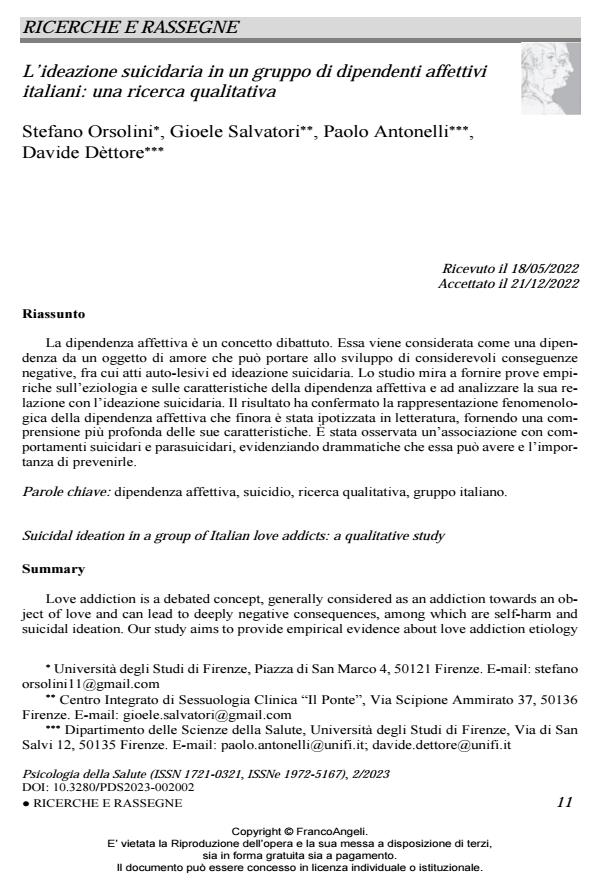Suicidal ideation in a group of Italian love addicts: a qualitative study
Journal title PSICOLOGIA DELLA SALUTE
Author/s Stefano Orsolini, Gioele Salvatori, Paolo Antonelli, Davide Dèttore
Publishing Year 2023 Issue 2023/2
Language Italian Pages 16 P. 11-26 File size 264 KB
DOI 10.3280/PDS2023-002002
DOI is like a bar code for intellectual property: to have more infomation
click here
Below, you can see the article first page
If you want to buy this article in PDF format, you can do it, following the instructions to buy download credits

FrancoAngeli is member of Publishers International Linking Association, Inc (PILA), a not-for-profit association which run the CrossRef service enabling links to and from online scholarly content.
Love addiction is a debated concept, generally considered as an addiction towards an ob-ject of love and can lead to deeply negative consequences, among which are self-harm and sui-cidal ideation. Our study aims to provide empirical evidence about love addiction etiology and characteristics, and to analyze its relation to suicidality. Our result confirmed the phenomeno-logical depiction of love addiction that so far has mainly been hypothesized in literature, also providing a deeper understanding of its characteristics. An association with suicidal and para-suicidal behaviors has been observed, highlighting the dramatic consequences love addiction can have and the importance of preventing them.
Keywords: love addiction, suicidality, qualitative research, Italian group.
Stefano Orsolini, Gioele Salvatori, Paolo Antonelli, Davide Dèttore, L’ideazione suicidaria in un gruppo di dipendenti affettivi italiani: una ricerca qualitativa in "PSICOLOGIA DELLA SALUTE" 2/2023, pp 11-26, DOI: 10.3280/PDS2023-002002